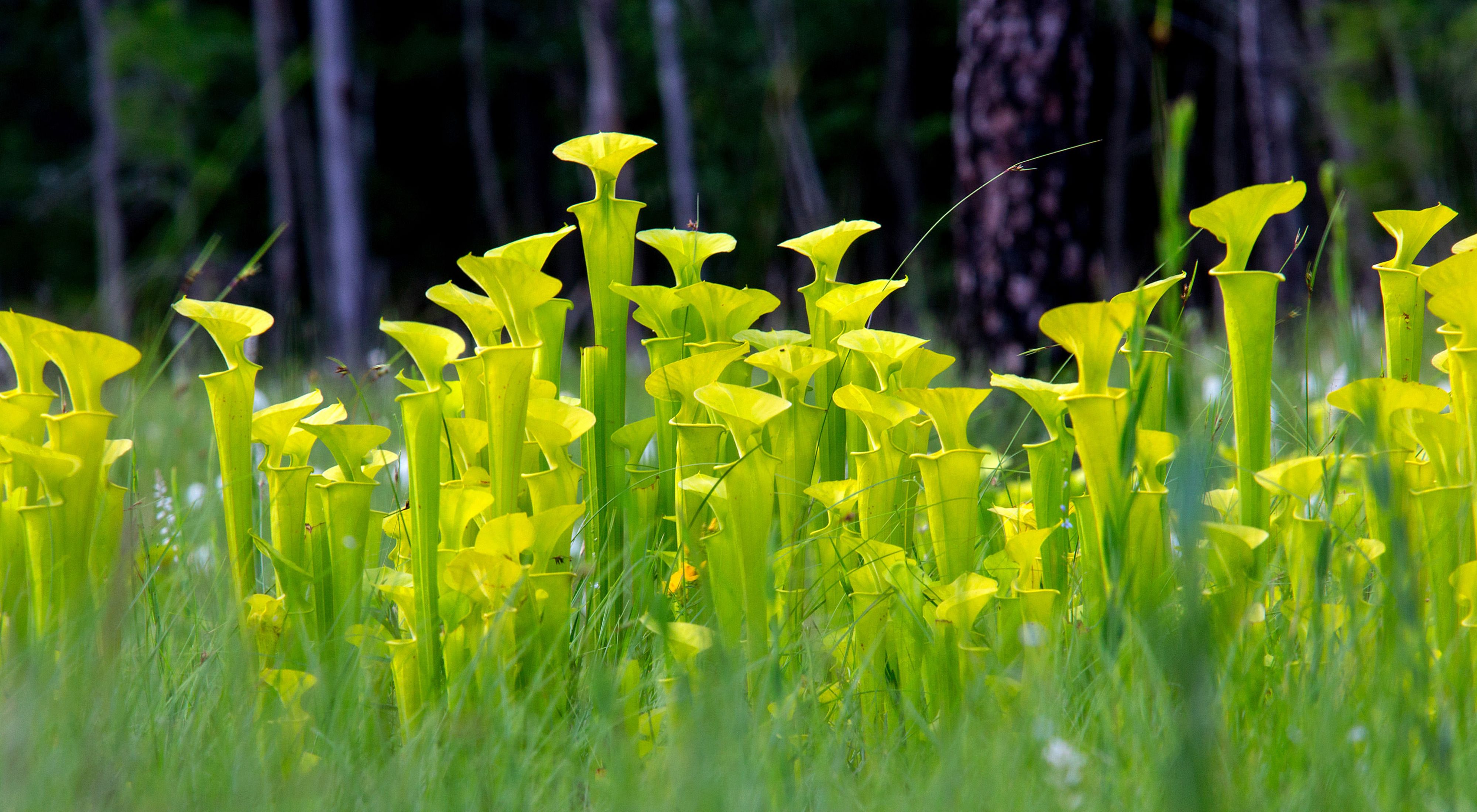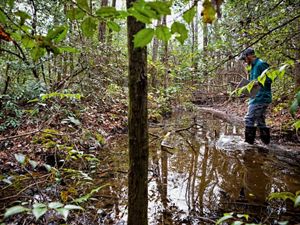Carnivorous Plants: North Carolina's State Treasures
More than half of the carnivorous plant species in the United States are native to North Carolina, including pitcher plants, flytraps and sundews.
The Venus Flytrap: A State Symbol
There are state birds, bugs, fish, flowers, and dogs—but North Carolina has a state carnivorous plant. The Venus flytrap (Dionaea muscipula) is exceptional enough to deserve its own state symbol designation, and due to their rarity, it’s a felony to poach them.

While flytraps are cultivated throughout the world, they are native to only a small area of the coastal plain in North and South Carolina. People even make special pilgrimages to North Carolina to see the flytraps. When they arrive, folks soon discover a wealth of special plants, colloquially dubbed meat-eaters, which rely on insects for nutrition.
There are 66 species of carnivorous plants in the United States, and an astounding 36 of them live in North Carolina. Acidic soils, low nutrients, and a high water table provide excellent habitat for carnivorous plants to thrive. These conditions exist in select patches across the state, ranging from longleaf pine savannas in the coastal plain to mountain bogs in the Southern Blue Ridge.






How Carnivorous Plants Trap Their Prey
Carnivorous plants do photosynthesize, but because they live in low-nutrient soils, they must look elsewhere for food. Flytraps close their tiny but mighty jaws around unsuspecting insects, while pitchers trap them in deep cavities filled with digestive liquid. Sundews and butterworts have sticky spots where the bugs get stuck. Bladderworts use suction traps. When aquatic prey touch their tiny hairs, a door opens to a water-filled sac, and insects get sucked inside, snapping the door shut.

Surprisingly, carnivorous plants still benefit from pollination and rely on insects to transfer pollen between flowers. In the case of pitchers and flytraps, this produces some stunning results. It’s common to see bugs hovering suspiciously nearby, perhaps getting a look at whether it’s safe to land. Carnivorous plants are selective, consuming ants and spiders and not bees, but there’s little known about how exactly they distinguish pollinator and prey.

Fire Helps Carnivorous Plants Compete
Fire plays an essential role in restoring habitat for carnivorous plants. Flytraps, pitchers, and other meat-eaters rely on disturbance for survival. Controlled burning removes shrubs and vegetation that prevent light from reaching the ground. In general, carnivorous plants compete poorly, but their resilience in the aftermath of a burn gives them an edge over their shrubby competitors. They bounce back quickly, sometimes within a matter of days.

In the mountains, TNC's work in bogs is becoming increasingly important. We played a key role in developing the country’s newest wildlife refuge—Mountain Bogs National Wildlife Refuge. Due to years of fire suppression, hardwoods and shrubs have overgrown, preventing species like the federally-endangered green pitcher plant from reproducing. Shrubs suck up water , and removing them restores the water table and allows light to reach pitchers. Since we’ve acquired Mountain Bogs and begun burning, there’s been a noticeable improvement in available water and number of plants.

We’re doing all we can to conserve carnivorous plant habitat, but protecting land is just the beginning. To restore populations of flytraps, pitchers, and others like them, we need to burn at regular intervals, which requires time and resources.

Donate today to ensure a bright future for these state treasures.
Contributions from generous supporters make a lasting difference for carnivorous plants in North Carolina.

.jpg?crop=224%2C0%2C3550%2C2663&wid=300&hei=225&scl=11.835555555555555)

